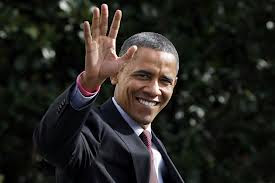The Associated Press has put together a report that
concludes about President Obama what most of us already suspected – this is
hardly the most transparent administration in history, which Obama famously
promised at the start of his first term.
concludes about President Obama what most of us already suspected – this is
hardly the most transparent administration in history, which Obama famously
promised at the start of his first term.
The AP’s Nancy Benac summarizes the White House’s
obsessive approach toward producing photos, videos and tweets that portray the
president and First Family in the best possible light.
obsessive approach toward producing photos, videos and tweets that portray the
president and First Family in the best possible light.
“At the same time,” Benac wrote, “it is limiting press
access in ways that past administrations wouldn’t have dared, and the president
is answering to the public in more controlled settings than his predecessors.
It’s raising new questions about what’s lost when the White House tries to make
an end run around the media, functioning, in effect, as its own news agency.”
access in ways that past administrations wouldn’t have dared, and the president
is answering to the public in more controlled settings than his predecessors.
It’s raising new questions about what’s lost when the White House tries to make
an end run around the media, functioning, in effect, as its own news agency.”
The White House press corps’ growing irritation with
Obama ratcheted up when the White House recently live-streamed on the Internet
Obama’s meeting with his export council and allowed just one reporter in the
room.
Obama ratcheted up when the White House recently live-streamed on the Internet
Obama’s meeting with his export council and allowed just one reporter in the
room.
Statistics compiled by Martha Kumar, a political science professor at Towson University
in Maryland who studies presidential communication, show how Obama’s strategy
has differed from his predecessors’.
in Maryland who studies presidential communication, show how Obama’s strategy
has differed from his predecessors’.
In his first term, Obama engaged in 107 short
question-and-answer sessions with reporters during events in the Oval Office,
the Cabinet Room and similar settings. President George W. Bush, by contrast,
had 354.
question-and-answer sessions with reporters during events in the Oval Office,
the Cabinet Room and similar settings. President George W. Bush, by contrast,
had 354.
By the same token, though, Obama held twice as many solo
press conferences as Bush: 36 compared to 17. And in the first term Obama did
674 interviews — TV, radio, Internet, print — compared to 217 for Bush and
191 for Bill Clinton.
press conferences as Bush: 36 compared to 17. And in the first term Obama did
674 interviews — TV, radio, Internet, print — compared to 217 for Bush and
191 for Bill Clinton.
Here’s Benac again:
“With interviews, the president has more power to choose
his timing, questioners and format, in hopes of delivering a certain message in
a setting that’s not always hard-hitting. In impromptu Q-and-A’s, the questions
fly about anything and everything from the national press corps — and these
wide-open opportunities to challenge the president on the events of the day
have become increasingly rare.”
his timing, questioners and format, in hopes of delivering a certain message in
a setting that’s not always hard-hitting. In impromptu Q-and-A’s, the questions
fly about anything and everything from the national press corps — and these
wide-open opportunities to challenge the president on the events of the day
have become increasingly rare.”





In his first term, Obama engaged in 107 short question-and-answer sessions with reporters during events in the Oval Office, the Cabinet Room and similar settings. President George W. Bush, by contrast, had 354.
So? There were TWO wars going on. You think that might have had an effect?